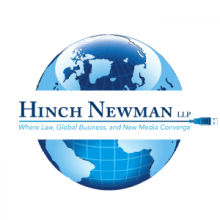The Federal Trade Commission’s bread-and-butter mission is to prevent deception and unfairness in the marketplace. FTC CID investigation lawyers have the power to investigate and agency staff also brings law enforcement actions against false or misleading claims that a product is of U.S. origin.
Consistent with applicable FTC Made in USA compliance standards, marketers and manufacturers that promote products as Made in USA must meet the “all or virtually all” standard. Additionally, as with most other advertising claims, a manufacturer or marketer may make any claim as long as it is truthful and substantiated.
The agency has issued an Enforcement Policy Statement on U.S. Origin Claims to provide guidance to marketers that want to make unqualified Made in USA claims under the “all or virtually all” standard and those that want to make qualified Made in USA claims.
The Enforcement Policy Statement applies to U.S. origin claims that appear on products and labeling, advertising, and other promotional materials. It also applies to all other forms of marketing, including marketing through digital or electronic mechanisms, such as Internet or email.
When Must U.S. Content be Disclosed on Products Sole in the U.S.?
U.S. content must be disclosed on automobiles and textile, wool, and fur products. No law requires most other products sold in the U.S. to be marked or labeled Made in USA, or have any other disclosure about their amount of U.S. content.
However, manufacturers and marketers that make claims about the amount of U.S. content in their products must comply with the FTC’s Made in USA policy.
What products does the FTC’s Made in USA policy apply to?
The FTC’s Made in USA policy applies to all products advertised or sold in the U.S., except for those specifically subject to country-of-origin labeling by other laws.
Note: Other countries may have their own country-of-origin marking requirements. Exporters should determine whether the country to which they are exporting imposes such requirements.
Express and Implied Made in USA Claims
A Made in USA claim can be express or implied. Implied claims are assessed based upon a number of factors, including, but not limited to the overall impression of the advertising, label or promotional material.
In some contexts, U.S. symbols, geographic references, U.S. flags, outlines of U.S. maps, or references to U.S. locations of headquarters or factories may convey a claim of U.S. origin either by themselves, or in conjunction with other phrases or images. Typically, the FTC will not consider a manufacturer or marketer’s use of an American brand name or trademark by itself as a U.S. origin claim.
The FTC warns manufacturers and marketers about indicating, either expressly or implicitly, that a whole product line is of U.S. origin when only some products in the product line are made in the U.S. according to the “all or virtually all” standard.
The Standard for Unqualified Made in USA Claims
In order for a product to be called Made in USA, or claimed to be of domestic origin without qualifications or limits on the claim, the product must be “all or virtually all” made in the United States (including the 50 states, the District of Columbia and U.S. territories and possessions).
“All or virtually all” means that all significant parts and processing that go into the product must be of U.S. origin. In other words, the product should contain no - or negligible - foreign content.
When a manufacturer or marketer makes an unqualified claim that a product is Made in USA, it must possess a “reasonable basis” to support the claim at the time it is made, not after. In other words, a manufacturer or marketer needs competent and reliable evidence to back up the claim that its product is “all or virtually all” made in the U.S.
“All of Virtually All” Factors Considered by the FTC
First, the product’s final assembly or processing must take place in the U.S.
After that, the FTC considers other factors, including, but not limited to, how much of the product’s total manufacturing costs can be assigned to U.S. parts and processing, and how far removed any foreign content is from the finished product.
Sometimes, only a small portion of the total manufacturing costs are attributable to foreign processing, but that processing represents a significant amount of the product’s overall processing. According to the Commission, the same could be true for some foreign parts. In these cases, the foreign content (processing or parts) is more than negligible, and, as a result, unqualified claims may be inappropriate.
Example: A company produces propane barbecue grills at a plant in Nevada. The product’s major components include the gas valve, burner and aluminum housing, each of which is made in the U.S. The grill’s knobs and tubing are imported from Mexico. An unqualified Made in USA claim is not likely to be deceptive because the knobs and tubing make up a negligible portion of the product’s total manufacturing costs and are insignificant parts of the final product.
The FTC recommends that manufacturers and marketers use the cost of goods sold or inventory costs of finished goods in their analysis of the percentage of domestic content in a particular product. Such costs generally are limited to the total cost of all manufacturing materials, direct manufacturing labor, and manufacturing overhead.
Manufacturers and marketers should be cautious about how they rely on information from American suppliers about the amount of domestic content in the parts, components and other elements they buy and use for their final products. Manufacturers and marketers should ask the supplier for specific information about the percentage of U.S. content before making a U.S. origin claim.
Example: A company manufactures food processors in its U.S. plant, making most of the parts, including the housing and blade, from U.S. materials. The motor, which constitutes 50 percent of the food processor’s total manufacturing costs, is bought from a U.S. supplier. The food processor manufacturer knows that the motor is assembled in a U.S. factory. Even though most of the parts of the food processor are of U.S. origin, the final assembly is in the U.S., and the motor is assembled in the U.S., the food processor is not considered "all or virtually all" American-made if the motor itself is made of imported parts that constitute a significant percentage of the appliance’s total manufacturing cost. Before claiming the product is Made in USA, this manufacturer should look to its motor supplier for more specific information about the motor’s origin.
In order to determine the percentage of U.S. content, manufacturers and marketers should look back far enough in the manufacturing process to be reasonably sure that any significant foreign content has been included in their assessment of foreign costs. According to the FTC, foreign content incorporated early in the manufacturing process often will be less significant to consumers than content that is a direct part of the finished product or the parts or components produced by the immediate supplier.
Raw materials may or may not be included in the evaluation of whether a product is "all or virtually all" made in the U.S. It depends on how much of the product’s cost the raw materials make up and how far removed from the finished product they are.
Are Qualified Claims Ok?
Maybe. They are generally safer than unqualified claims.
A qualified Made in USA claim describes the extent, amount or type of a product’s domestic content or processing. It indicates that the product isn’t entirely of domestic origin.
Example: "60% U.S. content." "Made in USA of U.S. and imported parts." "Couch assembled in USA from Italian Leather and Mexican Frame."
A qualified Made in USA claim may be appropriate for products that include U.S. content or processing but otherwise fail to meet the criteria for making an unqualified Made in USA claim.
However, even qualified claims may imply more domestic content than exists. Thus, manufacturers or marketers must exercise caution when making these claims. Avoid qualified claims unless the product has a significant amount of U.S. content or U.S. processing.
A qualified Made in USA claim, like an unqualified claim, must be truthful and substantiated.
Issues often arise with respect to U.S. origin claims for specific processes or parts. Claims that a particular manufacturing or other process was performed in the U.S. or that a particular part was manufactured in the U.S. must be truthful, substantiated, and clearly refer to the specific process or part, not to the general manufacture of the product, to avoid implying more U.S. content than exists.
Manufacturers and marketers should be cautious about using general terms, such as “produced,” “created” or “manufactured” in the U.S. According to the FTC, words such as these are unlikely to convey a message limited to a particular process. Additional qualification probably is necessary to describe a product that is not “all or virtually all” made in the U.S.
Additionally, if a product is of foreign origin (that is, it has been substantially transformed abroad), manufacturers and marketers also should make sure they satisfy Customs’ markings statute and regulations that require such products to be marked with a foreign country of origin. Further, Customs requires the foreign country of origin to be preceded by “Made in,” “Product of,” or words of similar meaning when any city or location that is not the country of origin appears on the product.
Assembled in USA Claims
A product that includes foreign components may be called “Assembled in USA” without qualification when its principal assembly takes place in the U.S. and the assembly is substantial.
However, for the “assembly” claim to be valid, the product’s last “substantial transformation” also should have occurred in the U.S.
Example: A lawn mower, composed of all domestic parts except for the cable sheathing, flywheel, wheel rims and air filter (15 to 20 percent foreign content) is assembled in the U.S. An “Assembled in USA” claim is appropriate.
What About the Custom Service?
The Tariff Act gives Customs and the Secretary of the Treasury the power to administer the requirement that imported goods be marked with a foreign country of origin. When an imported product incorporates materials and/or processing from more than one country, Customs considers the country of origin to be the last country in which a “substantial transformation” took place.
Even if Customs determines that an imported product does not need a foreign country-of-origin mark, it is not necessarily permissible to promote that product as Made in USA. The FTC considers additional factors to decide whether a product can be advertised or labeled as Made in USA.
Manufacturers and marketers should check with Customs to see if they need to mark their products with the foreign country of origin. They should also look at the FTC’s standards.
The FTC has jurisdiction over foreign origin claims on products and in packaging that are beyond the disclosures required by Customs. The FTC also has jurisdiction over foreign origin claims in advertising and other promotional materials.
Unqualified U.S. origin claims in ads or other promotional materials for products that Customs requires a foreign country-of-origin mark may mislead or confuse consumers about the product’s origin. To avoid misleading consumers, marketers should clearly disclose the foreign manufacture of a product.
Manufacturers and marketers should also be familiar with other statutes and requirements, including, but not limited to, the Textile Fiber Products Identification Act and Wool Products Labeling Act.
The FTC has been steadily increasing enforcement of deceptive U.S. origin claims. Manufacturers and marketers are well advised to ensure compliance with applicable requirements.




 />i
/>i

